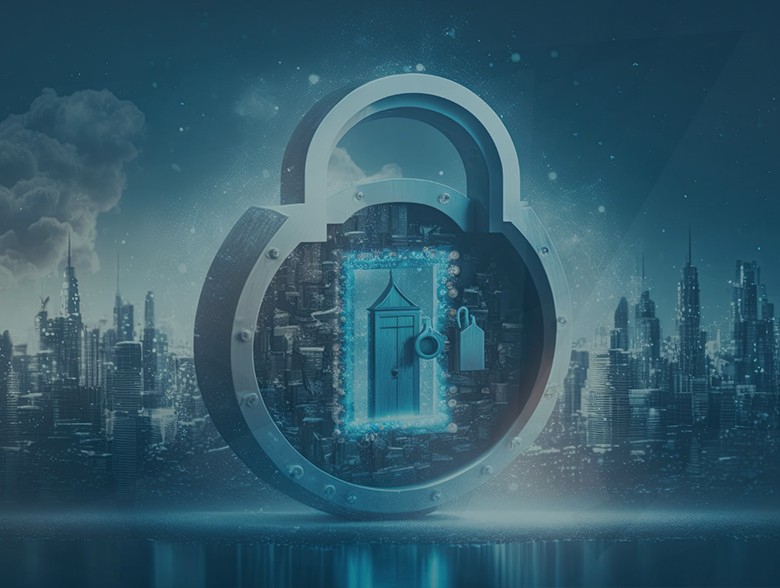By Jaye Tillson, Director of Strategy, Axis Security
In the realm of IT security, the traditional “castle and moat” strategy involved building a strong perimeter around the corporate network, like a medieval castle surrounded by a moat, to keep threats at bay.
However, in today’s modern workplace, this approach no longer provides adequate protection for the modern workforce.
The Changing Landscape of IT Security
The old castle and moat design worked well when corporate data and applications resided primarily within a physical data center, and employees accessed it from fixed locations using company-owned devices. However, several key factors have reshaped the IT security landscape, rendering this approach obsolete:
- The Rise of Remote Work: The COVID-19 pandemic accelerated the shift toward remote work and today, employees access corporate resources from various locations and from a multitude of devices which blurs the lines of the traditional perimeter.
- Cloud Computing: Over the last few years cloud services have become integral to modern IT infrastructures. Many organizations are increasingly relying on cloud providers like AWS, Azure, and Google Cloud, which operate outside the castle’s walls.
- Mobile and BYOD Policies: Bring Your Own Device (BYOD) policies are now commonplace in organizations, allowing employees to use their personally owned devices for work. Often, these devices do not meet the same security standards as company-owned and purchased devices.
- IoT Expansion: The proliferation of Internet of Things (IoT) devices has a large number of diverse endpoints, many of which are increasingly challenging to secure and are often vulnerable to attacks.
- Sophisticated Threats: Cybercriminals have evolved to bypass many of the traditional security measures. They use advanced tactics such as social engineering, phishing, and zero-day exploits, which render once very strong castle’s walls ineffective.
Why the Castle and Moat Approach Fails
The castle and moat approach focuses on defending the perimeter, assuming that threats originate from the outside. However, modern threats can emerge from within the network, making this strategy insufficient. The design lacks visibility into user and device activities once they breach the perimeter. These blind spots often lead to delayed threat detection and response.
Managing access control for remote workers, BYOD devices, and cloud services within a castle and moat model is also overly complex, leading to vulnerabilities. As organizations grow and adopt new technologies, expanding the castle’s walls becomes impractical and costly.
The castle and moat approach also hinders user experience with cumbersome authentication processes and restricted access that reduce productivity and are inefficient.
Modernizing IT Security: A New Paradigm
To adapt to the evolving IT landscape, I believe that architects must embrace a modern security paradigm that prioritizes the following principles:
- Zero Trust: Implement a Zero Trust security model assumes threats can exist both outside and inside the network. It is important in this new world that trust is never assumed and is continuously verified for users, devices, and applications.
- Identity-Centric Security: We need to shift the focus from network perimeters to user and device identities. Strong identity and access management (IAM) solutions are critical in ensuring secure access regardless of location or device.
- Continuous Monitoring: Deploying robust monitoring and analytics tools will help us gain real-time visibility into our user activities and potential threats.
- Cloud-Native Security: Integrating security into cloud services and adopting cloud-native security tools and practices will help protect data and applications wherever they reside.
- User Education: Educating employees and communicating security best practices, including how to identify and report potential threats like phishing attempts helps change organizational culture to be more security-focused.
Conclusion
I believe that the days of relying solely on a castle and moat design for IT security are long gone. As our digital landscape evolves, we architects should begin to adapt our security strategies to meet the challenges posed to us by remote work, cloud computing, and a multitude of devices.
Embracing a Zero Trust, identity-centric approach with continuous monitoring and cloud-native security measures will help us to better protect our users, their devices, and our applications in this ever-changing world.
I believe it’s now the time to leave the crumbling castle behind and build a new, resilient fortress for this new digital age.
About the Author
 Jaye Tillson is a Field CTO at Axis Security, boasting over 25 years of invaluable expertise in successfully implementing strategic global technology programs. With a strong focus on digital transformation, Jaye has been instrumental in guiding numerous organizations through their zero-trust journey, enabling them to thrive in the ever-evolving digital landscape.
Jaye Tillson is a Field CTO at Axis Security, boasting over 25 years of invaluable expertise in successfully implementing strategic global technology programs. With a strong focus on digital transformation, Jaye has been instrumental in guiding numerous organizations through their zero-trust journey, enabling them to thrive in the ever-evolving digital landscape.
Jaye’s passion lies in collaborating with enterprises, assisting them in their strategic pursuit of zero trust. He takes pride in leveraging his real-world experience to address critical issues and challenges faced by these businesses.
Beyond his professional pursuits, Jaye co-founded the SSE Forum and co-hosts its popular podcast called ‘The Edge.’ This platform allows him to engage with a broader audience, fostering meaningful discussions on industry trends and innovations.
In his leisure time, Jaye indulges in his passions for motor racing, savoring delectable cuisine, and exploring the wonders of the world through his travels.


